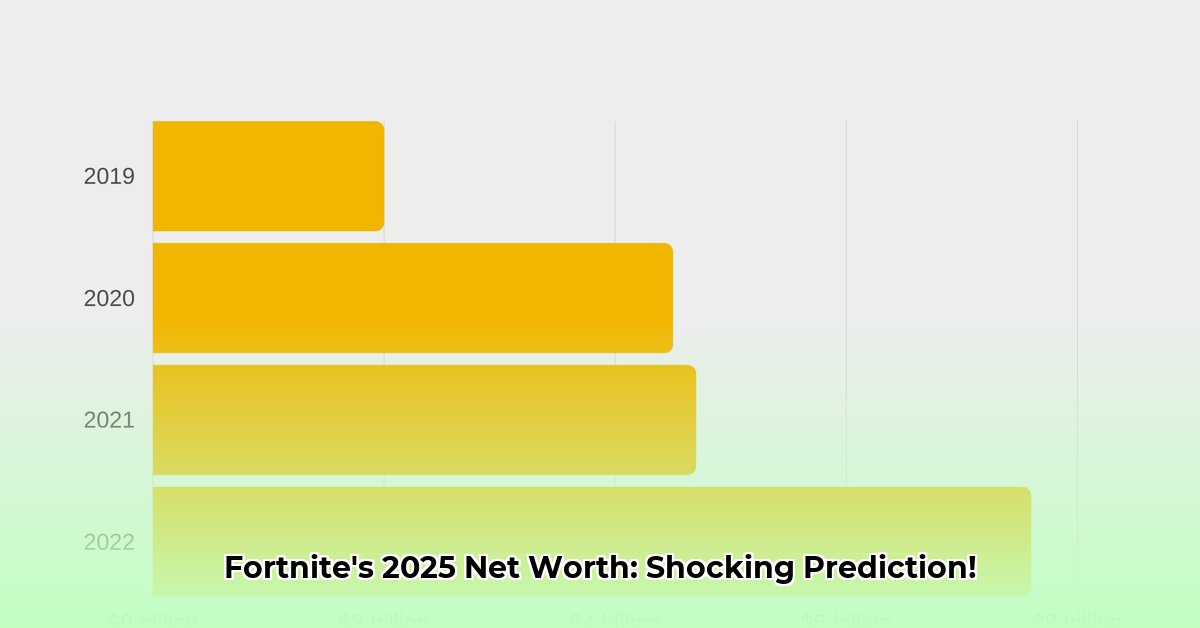
What is Fortnite's Net Worth?
Fortnite: a name synonymous with vibrant battles, iconic dances, and celebrity collaborations. But beyond the fun lies a financial behemoth. By 2025, Fortnite's revenue had exploded past $40 billion. This isn't simply a testament to a successful game; it's a case study in strategic business execution. This article delves into the multifaceted strategy behind Fortnite's astonishing net worth, exploring its revenue streams, user engagement, market position, and future prospects.
The Money Machine: Fortnite's Revenue Streams
Fortnite's financial success isn't accidental. It's a meticulously crafted ecosystem built on diverse income streams. In-game purchases form the cornerstone – the skins, emotes, and Battle Passes players buy to personalize their digital avatars. This microtransaction model, fueled by the game's extensive player base, generates a substantial revenue stream.
However, Epic Games' genius lies in its strategic brand collaborations. The Ariana Grande concert? The Marvel crossovers? These weren't mere additions; they were revenue-generating events, attracting new players and amplifying excitement among existing ones. This synergistic approach showcases the power of extending the game's influence beyond gameplay itself. How much did these partnerships contribute? That revenue data remains confidential, but industry analysts estimate it represents a significant portion of the overall total.
Keeping Players Hooked: User Engagement and the Power of Streaming
Fortnite boasts over 650 million registered users (as of 2025), but sheer numbers don't define success. Sustained player engagement is paramount. The average player dedicates 6-10 hours weekly to the game, showcasing its addictive gameplay. This substantial playtime fuels the in-app purchase economy, further enriching Epic Games' coffers.
Streaming platforms like Twitch and YouTube have played a pivotal role. They've transformed Fortnite gameplay into a spectator sport, reaching a broader audience and extending the game's cultural impact. This symbiotic relationship between playing and watching contributes significantly to Fortnite's overall success. The free-to-play model itself is a strategic masterclass, lowering the barrier to entry and subsequently creating a massive market for in-game purchases. But such a model has inherent risks as well.
The Battle Royale Landscape: Competition and Challenges
Fortnite's dominance in the battle royale genre is undeniable, but it's not without competition. New contenders constantly emerge, challenging Epic Games to innovate and maintain its edge. This competitive pressure necessitates continuous updates, fresh content, and novel game modes to retain the player base. The question remains: how long can this intense competition be sustained before market saturation impacts profitability? This requires a consistent and evolving strategic plan.
Risks and Challenges: Navigating the Uncertain Future
Despite Fortnite's phenomenal success, risks remain. Market saturation presents a significant challenge. As the market matures, attracting new players becomes increasingly difficult. Player churn, the loss of players, is another persistent threat. Security breaches and potential scams require continual vigilance and robust security measures. The broader integration into the nascent metaverse also presents both opportunities and challenges requiring a cautious and strategic approach.
(Risk Assessment Matrix Summary): The major risks – market saturation, security breaches, and competitor innovation – all carry a medium-to-high likelihood of occurrence and a significant potential impact on Fortnite's success, necessitating proactive mitigation strategies.
The Fortnite Forecast: Future Strategies and Prospects
What's next for Fortnite? Epic Games' strategy likely involves several key areas:
- Diversification: Expanding revenue streams beyond cosmetics, exploring new virtual item types or in-game events.
- Innovation: Creating compelling new game modes and experiences to maintain player interest and attract new audiences.
- Metaverse Integration: Strategically navigating the opportunities and challenges presented by the metaverse.
- Esports: Maintaining a strong esports presence to engage existing players and attract new ones.
- Player Retention: Implementing robust strategies to minimize player churn.
The coming years will be crucial for determining Fortnite's long-term trajectory. The ability of Epic Games to adapt and innovate will be paramount in shaping the next chapter of this billion-dollar saga.
How to Mitigate Fortnite Player Churn and Market Saturation
Key Takeaways:
- Fortnite's success is a result of a holistic marketing approach, combining effective monetization with community engagement.
- Continuous content updates are essential for combating player fatigue and attracting newcomers.
- Strategic partnerships with influencers and brands extend the reach and appeal of Fortnite.
- Data-driven decision making is crucial for adapting to market trends and optimizing marketing effectiveness.
Fortnite's revenue model is multi-pronged. The free-to-play model allows for massive player acquisition. Monetization is achieved through in-game purchases and smart branding partnerships. This model, while highly successful, requires constant adaptation to avoid market saturation and player churn. To mitigate these risks, Epic Games must continuously innovate, introducing new content and gameplay mechanics while analyzing player behavior to stay ahead of evolving trends. The future success of Fortnite will depend on its ability to adapt and maintain its engagement with a constantly evolving gamer base.